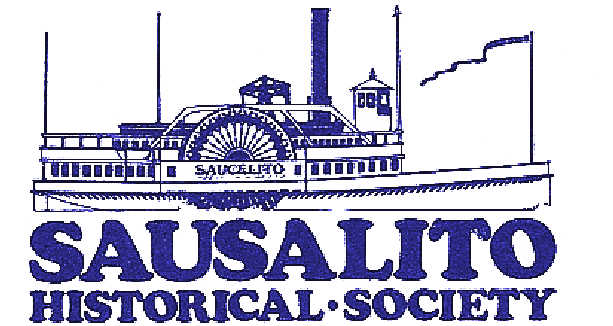By Steefenie Wicks, Sausalito Historical Society
In Jack Tracy’s book, Sausalito, Moments In Time, he describes Sausalito in the 1950’s as being on the threshold of its “art colony’’ years. Sausalito would experience an influx of artists in the decade after World War II. At first some returning service men and women may have come to place themselves as far as possible from the horror of war. They sought the quiet backwaters, as Sausalito was in those days, where natural beauty and serenity abound. Most of the property that had been used during the war was turned over to the War Assets Administration, whose function was to return it to civilian hands. Marinship was sold off piecemeal by sealed bid auctions. Donlon Arques was one of those who bid on the waterfront properties where he would open them as a place for some of the very first waterfront communities of artists, maritime workers, fishermen and others.
In the fall of 1983, the small waterfront enclave that housed Gate 3 on the Sausalito waterfront was a thriving community. It had a ‘Free’ store, a place where people could leave items they no longer needed, then pick up items they might find useful. You could find anything from clothing to pots and pans, along with canned goods. There were gardens where apples and peaches grew, along with grape vines that produced wonderful sweet grapes; people would gather them to make jams. There was even an avocado tree that once a year bore fruit.
Gate 3 at this time housed the only waterfront boat co-op where very talented carpenters and shipwrights lived and worked. In all 42 families lived in this community, both on land and water. All of this was provided by Don Arques, who believed in people living for a reasonable fee on the waterfront. He rented out the spaces for very little cash ─ at that time the highest rent on the property was $70 a month including studio space.
Gate 3 was a Mecca for over 30 years but that was soon to change.
In the spring of 1984, Rick Moran appeared on the property next door. He called it Marina Plaza; there he built two office buildings along with a new marina. He took one look at his neighbors and quickly decided that they must all go because they were bringing the value of his property down. Who had the right to rent to all of those hippies? He went to the City of Sausalito and brought charges against Donlon Arques, saying that all of these residents at Gate 3 must be evicted, the sooner the better.
Chris Hardman (in suit) created a “Moranship” poster to demonstrate how Moran wanted to take over Marinship during a protest March in June 1984. Photo by Steefenie Wicks
Having just dealt with what had become known as the Houseboat Wars down at Gate 6, the aspect of more trouble with waterfront residents was not something the City council wanted to experience.
A peaceful solution was sought to accommodate both the residents at Gate 3, along with the new property owner of Marina Plaza. While the City was exploring its options, the residents formed an association and got a lawyer, deciding to fight what they saw as an injustice to their way of life. They also sought the help of the new waterfront organization called Art Zone.
Art Zone had been formed by a group of concerned citizens who wanted to protect the waterfront, along with its talented residents. The members of Art Zone were all very well-known, talented individuals: Phil Frank (artist/cartoonist), Chris Tellis (whose family owned Yellow Ferry Harbor), Stewart Brand (publisher/editor of Whole Earth Catalog), Chris Hardman (artist /director Antenna Theater, resident of Gate 3), Mary Crowley (Ocean’s tour director dedicated to keeping our oceans clean), Annette Rose (Chris Hardman’s wife who would become the first waterfront resident to sit on the Sausalito Council, later becoming Mayor).
This group persuaded the then Mayor of Sausalito, Ray Tabor, to organize a meeting between them as representatives for the Gate 3 community with the new owner of Marina Plaza. Mayor Taber was able to set up this meeting at his home.
Tensions ran high on both sides. The new owner of Marina Plaza accused the residents of Gate 3 of making his life unbearable because he was being portrayed as some kind of a monster when all he was doing was protecting his investment. Members of Art Zone kept trying to get him to understand that he was evicting 42 families who had been established at Gate 3 for over 30 years. Waterfront workers’ lifestyles depended on how cheaply they could live with their families because for many of them their work was seasonal. These arguments fell on deaf ears and the new owner insisted that they had no right to be there and that they should all be evicted, find some new place to live, but not there.
In the end it was decided that the evictions would move forward, all would be relocated to either Gate 6 or Galilee Harbor. Mayor Tabor gave his word; the meeting came to an end. But after the new owner of Marina Plaza left, the Mayor expressed his sorrow in how he must take this action, then a sly smile played across his lips. He took the members of Art Zone aside, telling them he felt the new owner was being unreasonable so he in turn would put a stop order on the plans for the Marina’s third building.
So, for more than 30 years that piece of property sat empty. When something was finally built there, it was Alan Olson’s tall ship project, the Mathew Turner. A fitting ending for the 42 waterfront families of which I was part, that had to be evicted from Gate 3.

